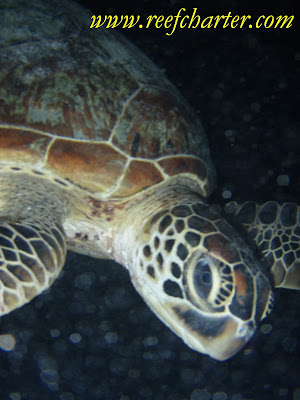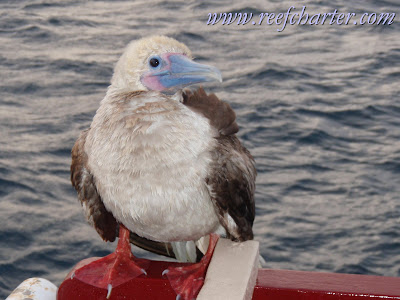The green turtle is a common sight around the reefs of Cairns, lazily eating and swimming around the dive sites they make a peaceful presence to the fantastic underwater landscape.
Quick Facts
Breeding Season – Late October to February
Years between breeding – Two to Eight Years
Nesting female carapace length – 107 cm (42 inches) (range from 91-124 cm)
Nesting weight – 130 kg (286lbs) (range from 98-184 kg)
Clutch size – 115 eggs (range from 62-153 eggs)
Hatchling emergence season – December to May
Hatching success – 84%
Hatchling size – 4.97cm (2 inches) (range from 4.02-5.19 cm)
Hatchling weight – 24.83g (0.87 oz) (range from 19.8-28.4 g)
Predators of hatchlings – Crabs, herons, dingoes and fish such as trevally and sharks
Conservation Status – Internationally Endangered — World Conservation Union
Description – Adult green turtles have a smooth, high-domed carapace, are olive green in colour, with occasional brown, reddish-brown or black highlights. Hatchlings have a black carapace with white margins around the carapace, flippers and on the plastron. Green turtles have one pair of prefrontal scales between their eyes.
Threats to Survival – Threats to survival include incidental capture in fishing and shark control program gear, ingestion of synthetic materials, boat strike, predation of eggs or hatchlings at rookeries, incidental capture in dredges, Indigenous harvest of adults and eggs within Australia and overseas and increased incidence of disease (high incidence of fibropapillomas).
Distribution and Habitat – Green turtles are found in tropical, subtropical and temperate waters around the world and appear to be the most abundant of the six species of marine turtle found in the Great Barrier Reef World Heritage Area. They are found in subtidal and intertidal coral and rocky reefs and seagrass meadows of the continental shelf. Green turtles are principally herbivorous as adults, eating mostly algae, seagrass, mangrove fruit and jellyfish.
The proportion of a green turtle population that nests each year is highly variable (up to an order of magnitude difference) and is influenced by variations in the El Nino Southern Oscillation (ENSO) Index. Green turtles are the species of marine turtle for which this correlation has been shown and it may be based upon nutrition.
For green turtles nesting and foraging in the Great Barrier Reef World Heritage Area, tag returns indicate migration to Indonesia, Gulf of Carpentaria, Arnhem Land, Torres Strait, Papua New Guinea, the Solomon Islands, Vanuatu and New Caledonia.
Breeding Areas
There is low density nesting on many islands and along the Queensland coastline. Although genetically distinct nesting aggregations are known, the stocks often occur in the same foraging habitat.




